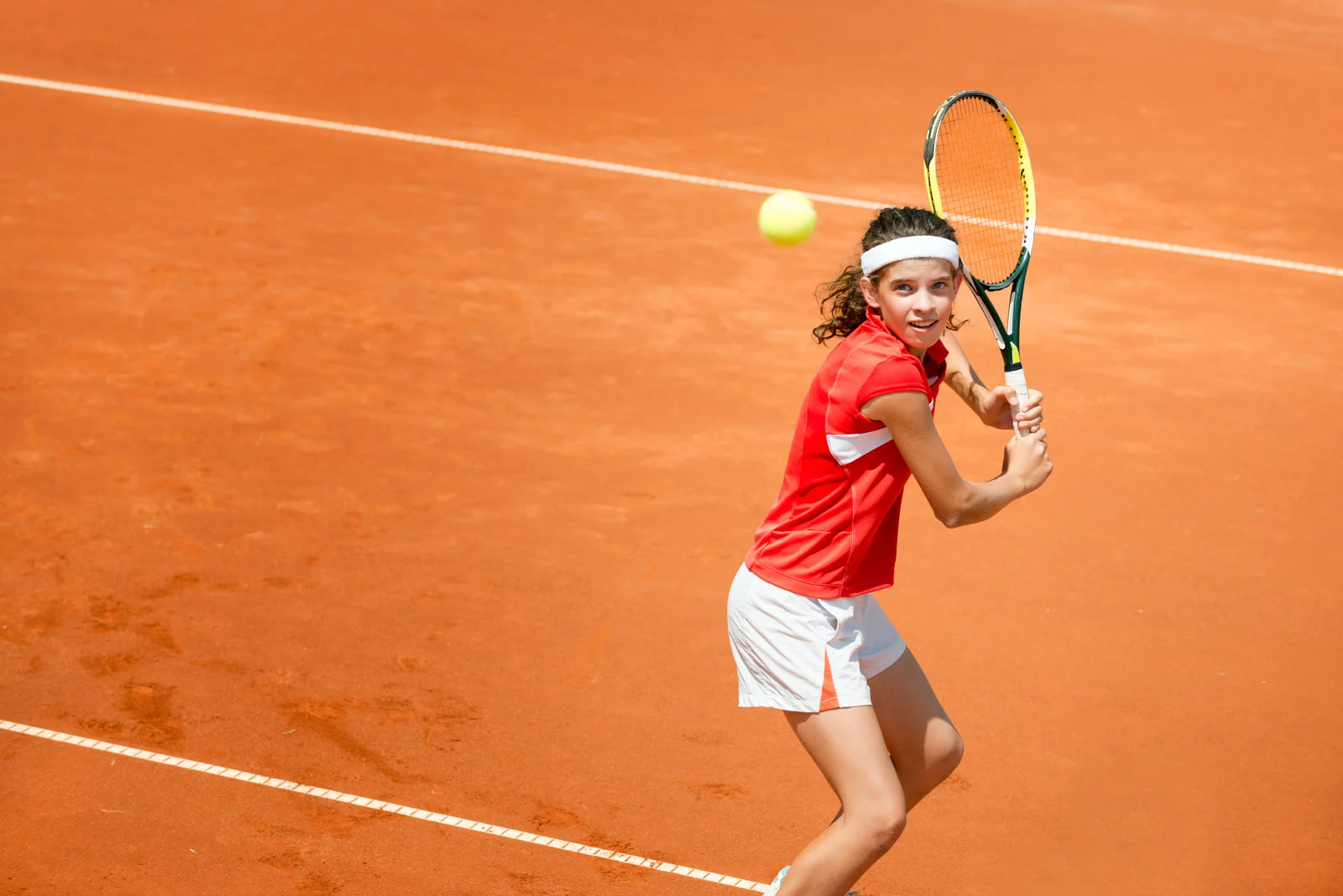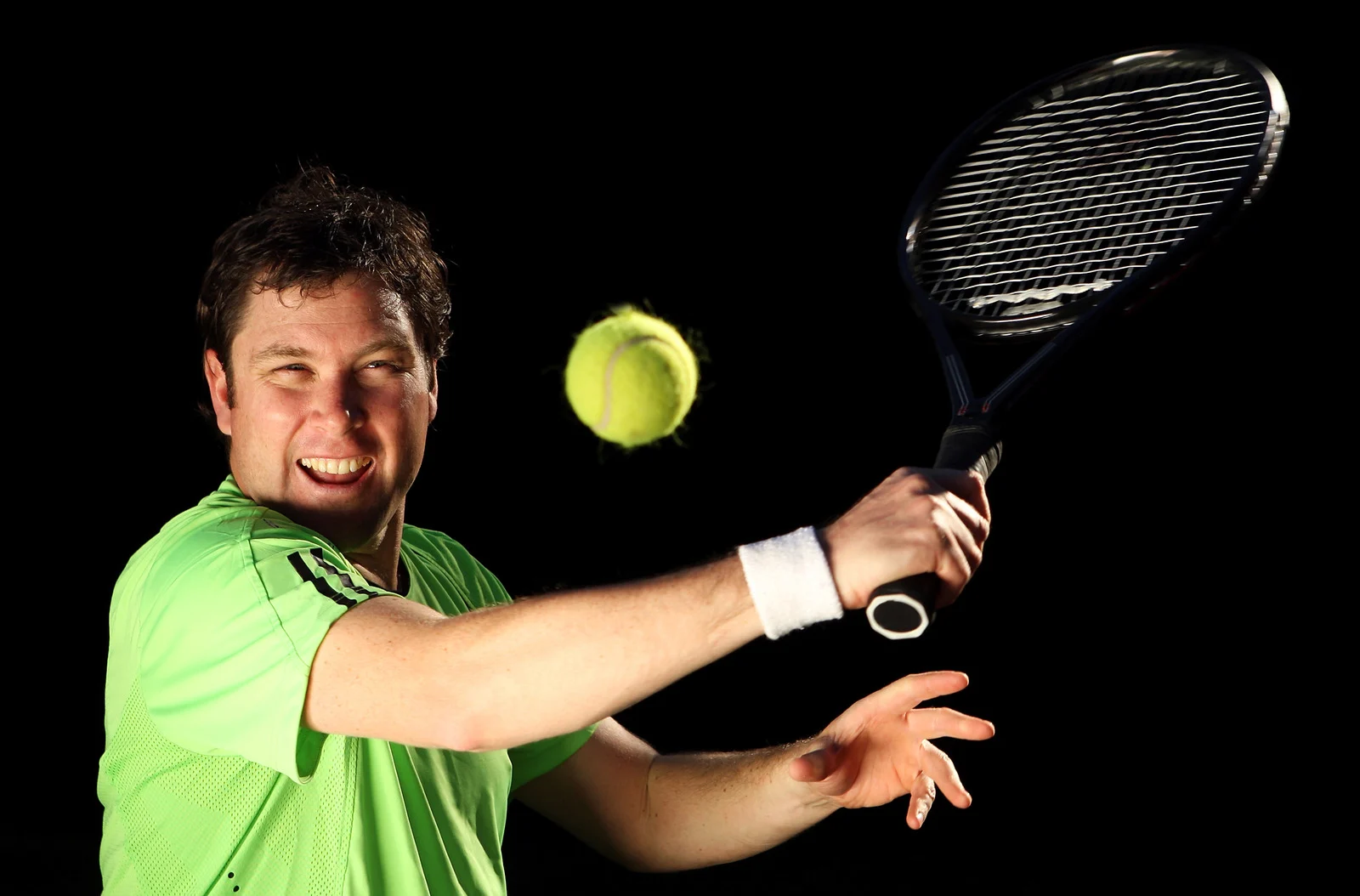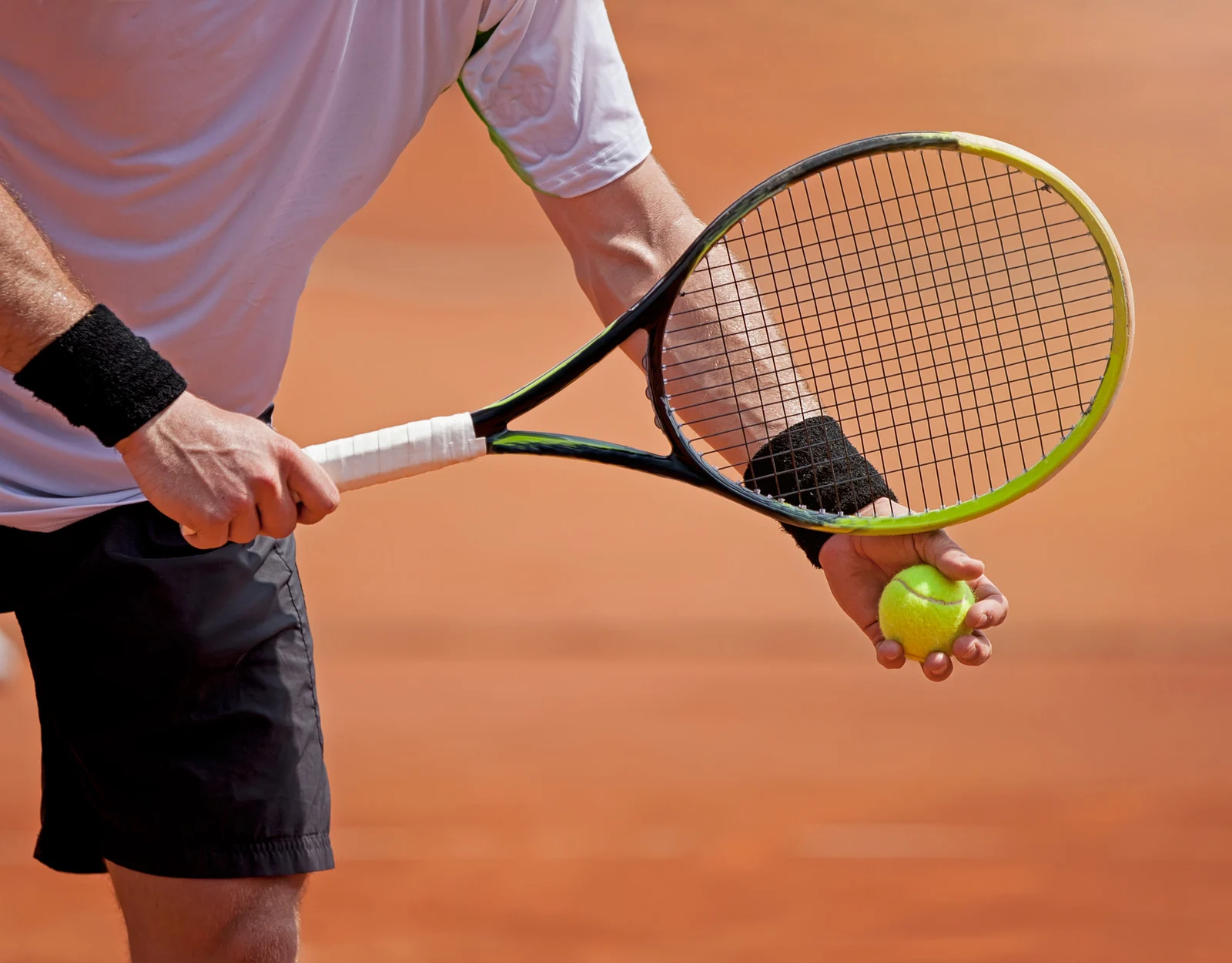Introduction
Tennis is a versatile game. To play well, you need to be able to use a range of different strokes. Forehand and backhand are the two basic types of tennis strokes. The forehand stroke is usually played with your dominant hand, while the backhand stroke uses your weaker hand.
There are also specific types of shots, such as top spin or slice shots, that are used with each stroke. For anyone looking to improve their tennis skills, mastering the range of strokes is the key to success.
List of Common Types of Tennis Strokes
1. Serve
To start a tennis game, one player serves the ball. This is done by throwing the ball in the air and hitting it with a racquet. The ball has to go into the diagonally opposite service box without getting stopped by the net. If it touches the net on its way back but goes over and lands in the correct service box, the serve is good.
When performing the serve in tennis, the player should stand sideways, with their front foot pointing towards the net post at a 45-degree angle. This is the only time in tennis when the player can take a moment to plan and prepare for the stroke. They must then quickly and efficiently react to any on-the-spot challenges during other strokes.
Considered one of the toughest strokes to master, mastering the serve can give you an edge in the game. Taking the time to perfect it is worth it – it pays off in the long run. A few practice rounds of drills and some precision training can do wonders for your tennis career. Make the effort – it will serve you well.
2. Forehand or Drive: Basic Tennis Stroke
When playing tennis, the forehand or drive is vital for success. It’s easy to learn and practice, and with the right technique you can hit powerful and accurate shots. Watch the ball carefully after the bounce, and then swing your skilful arm downwards to lift it over the net. For maximum impact, add some spin too. Mastering a good forehand or drive can make you a formidable opponent on the tennis court.
When playing tennis, your feet are just as important as your arms when it comes to hitting the ball. Start by placing your weak foot behind you for support. Then, as you swing your arm to swing your racket, lean on your strong foot. As you end your stroke and follow through, your weak foot should be supporting you while your strong foot is up on its toes. Follow the motion of your arm, shoulder and torso to finish the stroke with power.
To hit a forehand or drive well, the ideal height is at chest level. With a taller player, you can add more power to your shot when the ball is higher. When the ball comes in at hip height, it’s best to add topspin for depth and better placement. Topspin can surprise your opponent on any surface, but on clay it’s also great for changing speed and spin. On hardcourt and grass, driving is usually the smartest option. If you want to take the initiative, an approach shot may be necessary.

3. Backhand
The backhand can be performed with either one hand or two. A one-handed backhand offers greater reach and is better for backhand shots coming into the body. But if you prefer more control, the two-handed backhand might be the way to go. It offers more stability and makes it easier to hit balls that are too high. It can also be a great option for children, who will benefit from the added strength of a second hand. Experiment with both signals and decide which one feels more comfortable for you.
The backhand is a complex stroke that has two main variations– the one-handed and two-handed grip. Players with a one-handed hold typically use an eastern grip, while those with the two-handed technique favor an eastern or continental grip for the dominant hand, and an eastern or semi-western grip for the non-dominant hand.
Footwork is the key to great backhand shots. Balance, knee bend, racquet preparation and body rotation must be spot on. A good follow-through to generate depth into the court is also essential. Many players have a shorter backswing which results in weak and flat shots. To get the most out of the backhand, whilst keeping balanced, lean forward into the shot when possible. With a two-handed backhand, the non-dominant hand should be used as much or more than the dominant hand. This will give it a more powerful execution and greater follow-through length.
The backhand shot is an important part of any player’s performance. It can be hit with a slice, which goes low to the ground after bouncing and can be hard to handle for some players. Practicing the backhand correctly is key to making sure your opponents can’t exploit it during a match. With the right technique and some practice, you’ll have a reliable backhand that your opponents struggle to beat.
4. Volleys and Half-Volleys
To play a volley means to hit the ball before it bounces. It’s usually hit close to the net, but you can do it from anywhere in the court. A volley is sometimes referred to as a ‘flight’ because of its French name. You use different hands for forehand and backhand volleys – one hand only for backhand volleys. When making a backhand volley, hold your racket with one hand even if you usually use two hands to hit shots from the ground.
A half volley is when you hit the ball right after it bounces but before it gets very high off the ground. It’s also sometimes called an “on the rise shot” or a “short hop.” In tennis, a half volley is a shot that’s made as soon as the ball hits the ground and before it reaches its highest point.
5. Lob
If your opponent is at the net, you can use the lob to your advantage. It’s a defensive shot that works best when your opponent is at the baseline, giving you time to get back into position. To lob, make sure you pass the ball over your opponent and hit it into a clear court with an angle between 0 and 45 degrees. With the right execution, the lob can be a powerful move in your game.
Playing a lob can be a great advantage in tennis, but it does come with risks. Andre Agassi, Michael Chang and Andy Murray have all used this stroke successfully and become famous as a result. If done right, a lob could win you the point. So why not take the gamble?

6. Smash
Players use the smash shot when opponents hit a weak ball that is lobbed into the air. The smash looks like a serve, but it is done when the player is inside the court. It is used to finish a point, and done aggressively.
When a player receives a high ball or a weak lob close to the net, they can make an effective point-ending shot with a smash. This power move has a downward trajectory and can be very fast and angled, making it hard to return. If this is attempted, it is usually with a lob or passing shot.
7. Drop Shot
If you want to surprise your opponents in tennis, a drop shot is the way to do it. It’s a soft hit of the ball that goes over the net and close to the other side of the court. A good drop shot requires skill and control, plus strength to get it right. Use it when your opponent is far from the baseline for the best chance of success. With practice, you’ll master this tricky stroke and take your game to the next level.
If your opponent’s off-balance, they make a great candidate for your drop shot. You want to hit the ball with as little force as possible and try to get it just above the net. The goal is for your opponent not to have enough time to run forward and hit it back. So, don’t miss your chance and drop that shot!
Conclusion
Thus, this is our list of the different Tennis shot which a Tennis player should learn. You can learn the different shot in tennis and use them as per the situation to gain an advantage over your opponent.
Since Tennis is a versatile game, your presence of mind here can give you an advantage to learn the basic tennis shots and use them as per the requirements. Be it the forehand groundstroke, the Drop short or the lob, make sure to be adept in all the shots before you actually practice them on the field.
Good luck!





